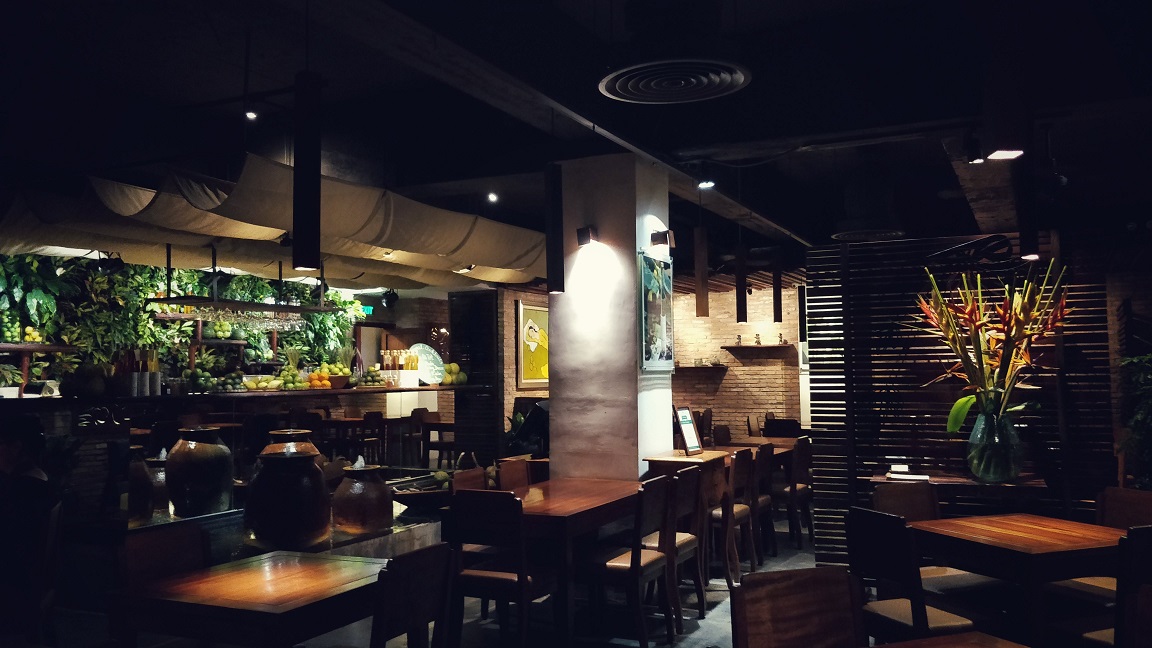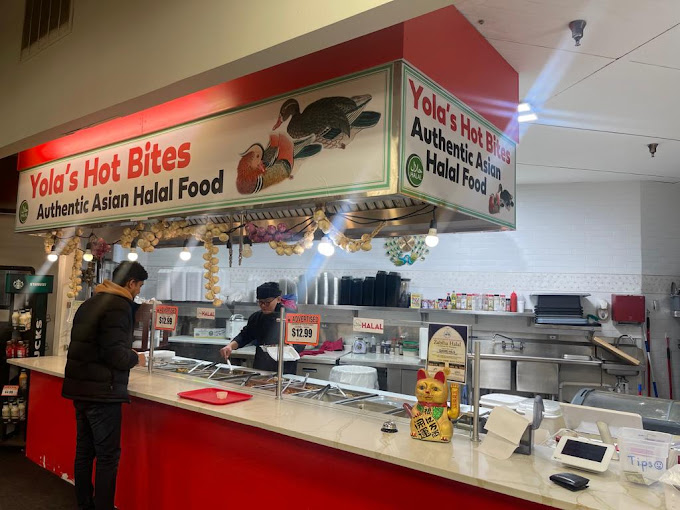Romantic Restaurants Islamabad: Ideal Dining Destinations for Pairs
Romantic Restaurants Islamabad: Ideal Dining Destinations for Pairs
Blog Article
Savor Genuine Oriental Food With a Pan-Asian Spin for a Culinary Adventure
Embarking on a culinary trip via genuine Eastern food, improved with a Pan-Asian twist, provides a distinct opportunity to explore the abundant tapestry of tastes that specify the region's diverse culinary traditions. As you ponder these attracting meals, take into consideration the social stories and historical impacts that form them, each bite supplying a story waiting to be uncovered. Fine dining experience Islamabad.

Exploring Pan-Asian Tastes
In the realm of international gastronomy, Pan-Asian food stands apart for its amazing variety and the harmonious interplay of tastes from various Eastern cultures. This cooking technique celebrates the distinct active ingredients and abundant traditions located throughout the continent, creating a tapestry of tastes that is both satisfying and interesting. Key to Pan-Asian cuisine is its ability to stabilize different tastes-- sweet, salted, spicy, and sour-- while highlighting the freshness and quality of each ingredient.
From the umami-rich soy sauce of Japan to the fiery chili peppers of Thailand, Pan-Asian food offers an extensive scheme of flavors. These elements are usually integrated in innovative ways, enhancing recipes with layers of intricacy. For example, the usage of great smelling herbs such as lemongrass and cilantro, typical in Vietnamese and Thai food, includes a refreshing brightness to meals, while the consolidation of coconut milk provides a creamy, abundant appearance.
The emphasis on fresh produce and fragrant flavors makes certain that each dish is not only a feast for the palate but likewise for the senses. Pan-Asian cuisine welcomes restaurants to embark on a culinary journey, discovering the large and differed landscapes of Asian gastronomy with every bite.
Blend Dishes to Attempt
While Pan-Asian food is celebrated for its conventional flavors, the modern-day cooking landscape is progressively embracing blend dishes that blend these traditional elements with impacts from other regions. This innovative method not only honors the abundant heritage of Eastern cookeries yet also introduces novel taste experiences that appeal to modern palates.
A prime instance of such a combination dish is the Korean-Mexican taco, where seasoned bulgogi beef is wrapped in a cozy tortilla, topped with kimchi and a hot gochujang-infused salsa. This combination weds the bold, savory tastes of Korea with the vibrant, fresh components of Mexican cuisine. Similarly, sushi burritos have actually gotten popularity, amalgamating the fragile creativity of Japanese sushi with the hearty, hand-held benefit of a burrito, often featuring blend active ingredients like tempura shrimp and avocado with a drizzle of wasabi mayo.
An additional notable recipe is Thai curry ramen, which infuses the velvety, aromatic flavors of Thai curry right into the comforting broth of standard Japanese ramen, creating a harmonious blend that entices the senses. These blend dishes prolong past mere novelty; they stand for a cooking dialogue between societies, encouraging expedition and advancement worldwide of Pan-Asian food.
Crucial Components and Spices
To truly appreciate Pan-Asian cuisine, one must understand the essential ingredients and spices that form its foundation. This varied cooking design attracts from an abundant tapestry of Oriental customs, utilizing an unified mix of tastes and textures.
Aromatic components are critical, with lemongrass, garlic, and ginger being common throughout numerous Pan-Asian recipes. These ingredients provide a great smelling base that improves the complexity of tastes. Spices such as celebrity anise, cardamom, and cinnamon present warmth and character, site web echoing influences from regions like China and India.

Food Preparation Strategies and Tips
Understanding the art of Pan-Asian cuisine calls for experience with its distinctive cooking techniques, each adding to the lively tapestry of flavors this culinary tradition is commemorated for. Central to these methods is the stir-fry, a fast food preparation method that preserves the nutritional integrity and brilliant shades of ingredients. Making use of a frying pan, the stir-fry method permits also warm circulation, vital for attaining the characteristic texture and flavor balance of Pan-Asian meals.
One more essential strategy is steaming, particularly widespread in Chinese food. This gentle method maintains the natural flavors and nutrients of components, making it suitable for fish and shellfish and veggies. Dumplings, a beloved staple, frequently gain from steaming, leading to soft, succulent structures.
Barbecuing, likewise indispensable, imparts smoky depths to recipes such as Korean bulgogi or Japanese yakitori (Chinese food Islamabad). This strategy frequently includes seasoning ingredients, enabling tastes to penetrate deeply before food preparation over an open flame or warm plate
Last but not least, understanding the art of stabilizing tastes-- sweet, sour, salty, bitter, and umami-- is important. Appropriately layering these components can raise use this link a recipe from normal to remarkable, using a complex and satisfying culinary experience that symbolizes the essence of Pan-Asian cuisine.
Eating Experiences Worldwide
Across the globe, Pan-Asian cuisine offers an unrivaled dining experience, commemorated for its rich tapestry of tastes and lively presentations. This cooking phenomenon has actually gone beyond cultural limits, capturing the hearts and tastes of food lovers worldwide. In multicultural cities like New York, London, and Sydney, Pan-Asian dining establishments function as fusions where culinary practices from Thailand, Japan, China, and beyond merge, offering restaurants with an eclectic mix of recipes that highlight the region's variety.
The worldwide allure of Pan-Asian cuisine depends on its capacity to provide both credibility and advancement. Cooks skillfully wed conventional active ingredients such as lemongrass, soy sauce, and miso with contemporary strategies, causing dishes that are both refreshingly brand-new and acquainted. This blend allows diners to start website here a culinary journey that appreciates heritage while accepting modernity.
In addition, dining experiences are elevated with attentively made environments that reflect the values of Pan-Asian looks. From minimalist Japanese-inspired interiors to lively Thai-themed rooms, each restaurant uses a special ambiance that matches the culinary offerings. Because of this, clients are not simply consuming a dish yet partaking in a social experience, making Pan-Asian eating a really global phenomenon.
Final Thought
The exploration of Pan-Asian cuisine uses an extensive understanding of the complex interaction of tastes and cooking practices across Asia. By welcoming combination dishes such as Thai curry ramen and sushi burritos, the cooking trip not only highlights the adaptability of typical active ingredients yet also showcases ingenious modern-day methods. This gastronomic experience, improved by cooking approaches and important flavors, offers an unique chance to value the multiculturalism and cooking virtuosity that specify Pan-Asian cuisine on a global range.
Embarking on a cooking journey with genuine Oriental food, improved with a Pan-Asian spin, supplies an one-of-a-kind opportunity to check out the abundant tapestry of flavors that specify the region's varied culinary customs.In the realm of international gastronomy, Pan-Asian cuisine stands out for its impressive diversity and the unified interplay of tastes from different Asian societies. Key to Pan-Asian food is its capability to stabilize contrasting flavors-- pleasant, salted, spicy, and sour-- while highlighting the freshness and high quality of each component.

Report this page